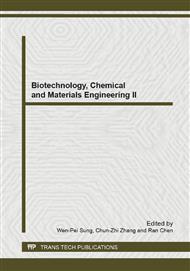[1]
MENG He. Bone Biomechanics and Bone Fracture [M]. Beijing: Science Press, (1992).
Google Scholar
[2]
QIAN Lin-zhao. Biography of World Famous Scientists [M]. Beijing: Science Press, (1992).
Google Scholar
[3]
TAN Yuan-chao. Three Principles of Inheriting and Developing Bone Injury Discipline of TCM [J]. Journal of Medical Forum, 2006, 3 (22): 86-88.
Google Scholar
[4]
CUI Wei, LIU Cheng-lin. Basic Bone Biomechanics [J]. Chinese Journal of Osteoporosis, 1997, 3 (4): 82-85.
Google Scholar
[5]
WANG Zheng-guo. Traffic Medicine [M]. Tianjin: Tianjin Science and Technology Press, (1997).
Google Scholar
[6]
CHEN Hai-bin, CHENG Xue-mei, LI De-yuan. Two-dimensioned Numerical Analysis for Pedestrians' Tibia Collision Response During Vehicle-man Collision Traffic Accidents [J]. International Journal of Bio-medical Engineering, 2001, 34 (3): 167-170.
Google Scholar
[7]
YANG Gui-tong, WU Wen-zhou. Bone Biomechanics [M]. Beijing: Science Press, (1989).
Google Scholar
[8]
Rubin C. Turner A S. Bain S. Low Mechanical Signals Strengthen Long Bones [J]. Nature, 2001, 412: 603-604.
DOI: 10.1038/35088122
Google Scholar
[9]
LIU Yang, ZHOU Jun, YE Qu-qun. Mechanical Vibrational Ossification Effect Studies Progress [J]. China Journal of Orthopaedics and Traumatology [J]. 2008, 21 (5): 400-402.
Google Scholar
[10]
YIN Wen-hua, JIN Da-di, DENG Xu-yong. Impact of Mechanical Oscillation on Spinal Cord De-cytoskeleton Morphology [J]. Journal of Southern Medical University, 2008, 28 (10): 1748-1751.
Google Scholar
[11]
Sastry S. M., Sastry C. N., Paul Bk. Leading Cause of Facial Trauma in the Major Trauma Outcome Study. Plast Reconstr Surg, 1995, 95: 196-197.
DOI: 10.1097/00006534-199501000-00039
Google Scholar
[12]
BO Bin, ZHOU Shu-xia, BAI Xi-gang. Upbuilding a dynamic model of human skull by using modal analysis[J]. Chinese Journal of Trauma, 2000, 16 (12): 716-718.
Google Scholar
[13]
CHENG Fang-rong, WANG Xue-chang, WANG Jian-zhi. Bio-mechanical Analysis of Fracture of Distal Radius [J]. The Journal of Traditional Chinese Orthopedics and Traumatology, 2001, 13 (2): 43-44.
Google Scholar


